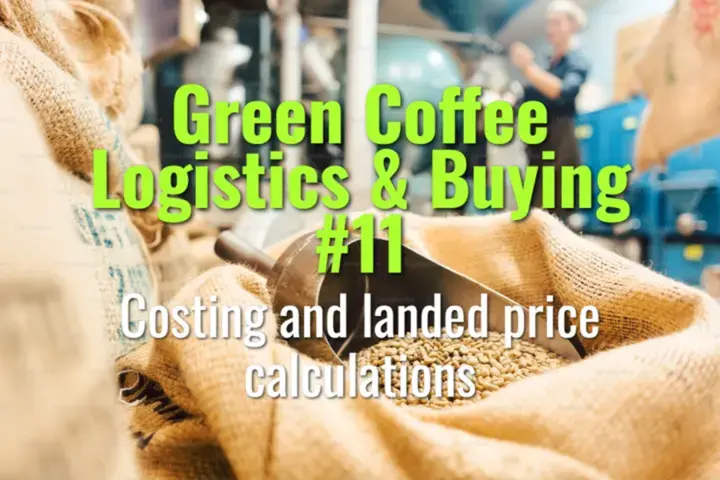Costing and landed price calculations
This topic explains how the landed price of green coffee is calculated, including farmgate costs, logistics, fees, and importer margins, giving buyers and producers a clear view of cost structures in trade.
- Coffee Basics Nerds
- 2 min read
Article 11 of 12 in Green Coffee Logistics & Buying/

What is Landed Price?
- The final cost of green coffee once it arrives at the buyer’s warehouse.
- Includes all expenses from farm to port of entry, plus domestic logistics and importer margins.
Key Cost Components
1. Farmgate / Producer Costs
- Labor for harvesting and processing.
- Inputs (fertilizer, equipment, certifications).
- Farm management and cooperative fees.
2. Milling & Export Costs
- Hulling, grading, and sorting.
- Bagging and lot coding.
- Exporter fees and documentation.
- Inland transport to port.
3. Shipping & Insurance
- Ocean freight charges (per container or per bag).
- Marine cargo insurance.
- Container preparation and fumigation if required.
4. Import & Customs Fees
- Import duties and tariffs (varies by country).
- Customs brokerage and clearance fees.
- VAT or sales tax where applicable.
5. Importer Costs & Margins
- Storage in consuming country warehouse.
- Financing costs (covering contracts and inventory holding).
- Importer markup for operations and profit.
Formula (Simplified)
Landed Price = Farmgate Price + Milling/Export Costs + Freight & Insurance + Import Duties/Customs + Importer Margin
Example (Illustrative)
- Farmgate: $2.00/lb
- Milling/export: $0.30/lb
- Freight/insurance: $0.25/lb
- Import/customs: $0.15/lb
- Importer margin: $0.30/lb
- Total Landed Price = $3.00/lb
Why It Matters
- Helps roasters understand true cost of coffee beyond farmgate price.
- Increases transparency between producers, exporters, and buyers.
- Guides contract negotiations and pricing decisions.
Challenges
- Prices fluctuate with exchange rates, fuel, and freight rates.
- Lack of transparency can disadvantage farmers.
- Complexity in multi-origin blends.
Best Practices
- Request full cost breakdown from exporters/importers.
- Compare landed price vs farmgate to assess value distribution.
- Factor in certifications, quality premiums, and risk mitigation costs.
Lasting Importance
Costing and landed price calculations are essential for transparency and fair trade. By understanding each cost layer, stakeholders can ensure equitable pricing, strengthen trust, and sustain long-term specialty coffee relationships.